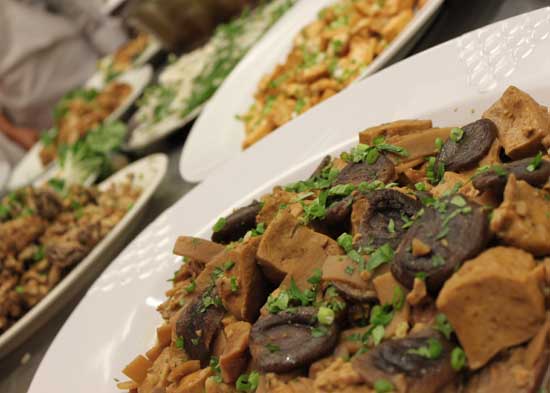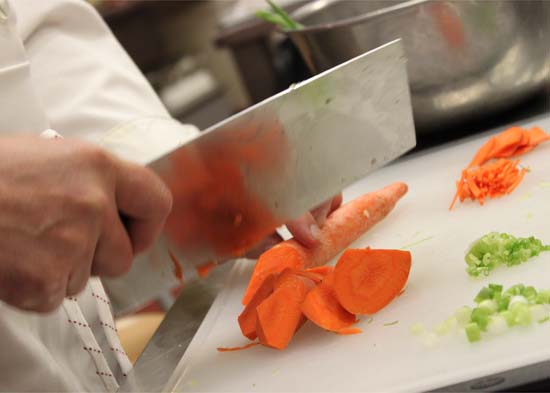ICE Cook for a Day: Learning to Stir-Fry with Success
ICE offers one of the country’s largest recreational cooking programs. With over 1,500 cooking classes and over 22,000 students each year, there is something for every cook looking to learn new techniques in the kitchen. This month, Yasmin Fahr of The Daily Meal tried out a special cooking class, Chinese Buddhist Vegetarian Dinner with Kian Lam Kho.
A course like Chinese Buddhist Vegetarian Dinner usually draws vegans, vegetarians and those who are looking to cook with alternative meat products. So why was an omnivore like myself attracted to this class? Because, let’s face it, incorporating more vegetables into our diet is becoming more and more important in America, so I wanted to learn from a cuisine and culture that’s been doing just that for centuries on end. One of the greatest parts of Chinese cuisine is the common cooking method of stir-frying, which allows you to quickly infuse vegetables and foods with intense flavor to create nutritious and tasty dishes. And in Chef Instructor Kian Lam Kho’s class at ICE, that’s exactly what we learned to do.
The key to successfully stir-frying a dish, as he explained, is learning the basic principles of this method of cooking. First and foremost, you need a wok. What should it be made of? Chef Kho recommends one made of carbon steel and recommends avoiding non-stick woks. The benefit of woks is that they distribute heat evenly and require less oil than skillets, making the meal lighter and healthier. Once you have your wok, there are a few simple steps to follow to ensure a delicious and flavor-filled meal.
First, set up your mise en place. Why? As chef Kho explains, once you start cooking, you won’t have time to grab the soy sauce or seasonings because it all happens so fast. He recommends cutting aromatics like ginger, garlic, and scallions (the Chinese equivalent to the Western mirepoix) on the bias. Because a stir-fry is so quick, this method gives them a larger surface area so that you can extract as much flavor as possible when cooking. Side note: in general, the white and light green parts of scallions are used for cooking, and the dark green for garnish. After prepping your ingredients, it’s important to pre-cook any proteins that you are using in the dish — this can be both meat and products like seitan and tofu. You can deep-fry these products (also possible in a wok) and then set them aside until the dish is almost finished. Now is the time to heat up your oil.
As chef emphasizes, it’s important to use an oil with a high smoking point, which automatically rules out olive oil. He prefers rice bran that’s mostly manufactured in Asia but can be bought at health food stores or in Chinatown. Grapeseed oil is another alternative but can be pricier than rice bran. Though sesame oil is often used in Chinese cooking, it’s more for flavoring and seasoning at the end of the cooking than during the actual cooking process.
Once the oil is hot, add in the aromatics like ginger, garlic, and scallions that give food its flavor and then longer-cooking vegetables like carrots. Once soft, throw in vegetables like snow peas that require less time. Add any pre-cooked proteins back in and finish the dish with a sauce, either simple or elaborate, and additional flavorings (this would be the time for the sesame oil and green scallion parts). There are of course different and more complex aspects of stir-frying like the moist stir-fry and the dry wok stir-fry, but you are just going to have to take a class from the expert to learn more. Enjoy!




Add new comment